There are countless recipes that you can make once you learn how to make your own whipped soap base from scratch. I love the light and fluffiness of this soap, it is like washing with clouds of goodness. Just make the base and store it away until you are ready to whip up a new soapy creation.
Whipped soap base is used in a lot of different recipes, everything from Melt and Pour Soap Cupcakes to How Whipped Sugar Scrubs. You can purchase the whipped soap base, but it is actually pretty simple to make at home. It is made from a blend of surfactants and other ingredients that we will discuss.
Table of Contents
Prefer to watch this project instead of reading it?
Some links are affiliate links because I am an associate and I earn a small commission on them.
As you can see, whipped soap base is a thick, fluffy soap.
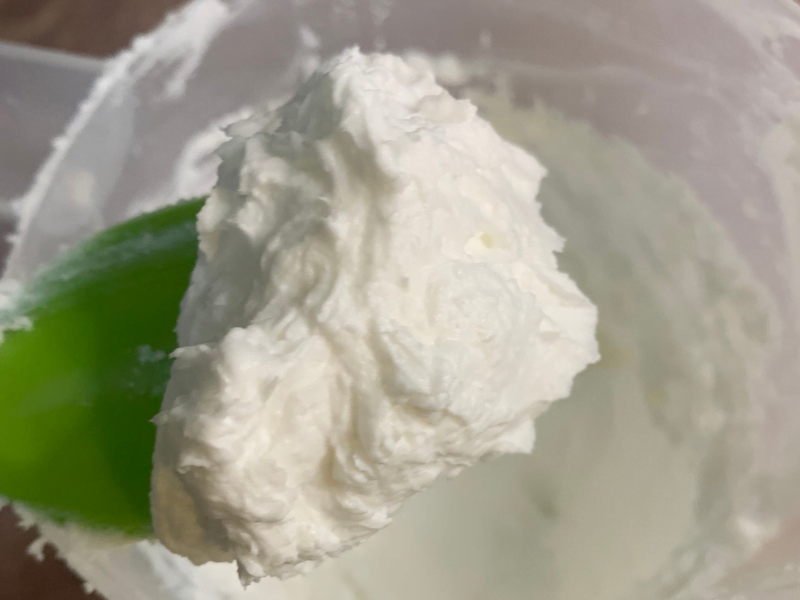
What is whipped soap base used for?
Whipped soap base aka foaming bath butter is used in a bunch of homemade skin care recipes. I like to make everything from Melt and Pour Soap Cupcakes to How Whipped Sugar Scrubs with it. The cool thing is this is just the base, from here you can add fragrance oils and mica powder to make all kinds of different things with it. One of my favorite things to do is to add a bit of sugar to the whipped soap base and make an exfoliating soap. It just leaves your skin feeling so smooth and clean.
Is whipped soap base actually soap?
Although it is not technically a soap, because true soap is made with oils and lye, it is a cleansing agent. You will notice a lot of “soaps” in the stores are called beauty bars, this is because they are made with surfactants. I could go on for days on surfactants, but if you want to learn more check out my Surfactants Explained post.
Even though it is not technically a ‘soap’ it is a cleaning agent. It washes your hands and body the same as a soap would.
What ingredients do you need to make a WHIPPED SOAP BASE?
Since this is the base recipe, I am going to leave it unscented and uncolored. From there, we will learn how to create all the other things it can be made into.
We have 3 phases in this recipe. I know, that sounds like a lot. We have the water and oil phases, both of which need to be heated. We also have a cool down phase where we add our preservative, that can not be heated.
Water Phase
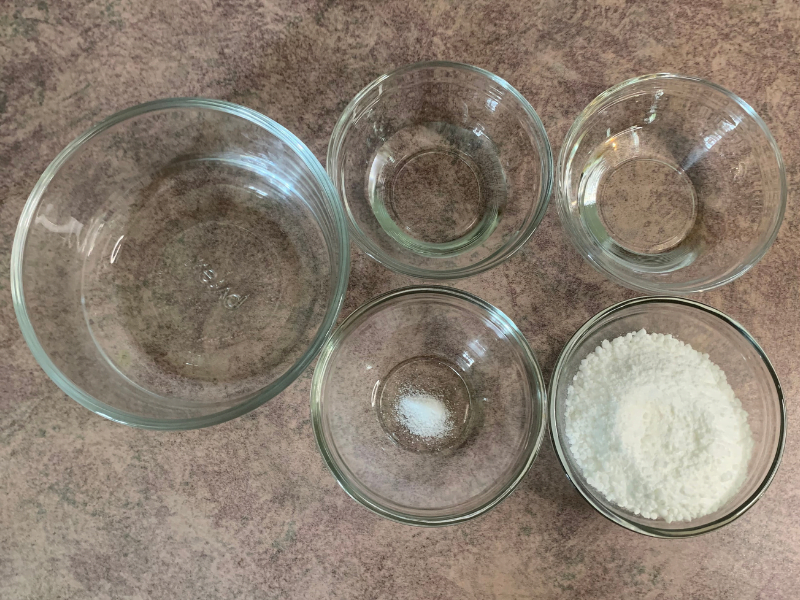
Distilled Water
You will want to ensure that you are using distilled water as all water is not created equal. Hard waters or different minerals in your tap water can effect the overall product.
Vegetable Glycerin
Vegetable glycerin is a humectant, which means that it draws moisture from the air to itself. Adding the vegetable glycerin also helps to soften the soap base and keeps it moldable. It also draws moisture to your skin when you use the whipped soap and holds it there.
Proplyene Glycol
Propylene glycol is the emulsifier for the whipped soap base. You have to add it in order to get everything to mix together and to stay together. If you would like to learn more about emulsions, check out my Emulsions – What Are They and How Do They Work post.
Tetrasodium EDTA
Tetrasodium EDTA works with the preservative to preserve it’s efficacy. Since this soap base is probably going to be made in advance of making your actually ‘finished product’, we want to keep it preserved as long as possible.
Sodium Cocoyl Isethionate (SCI)
SCI is the surfactant in our whipped soap. Basically, it is what gives the soap the ability to bubble up. SCI is made from coconut oil and is very mild. If you are working with this in powder form, be sure to wear a mask as the fine powder can irritate your lungs.
Oil Phase
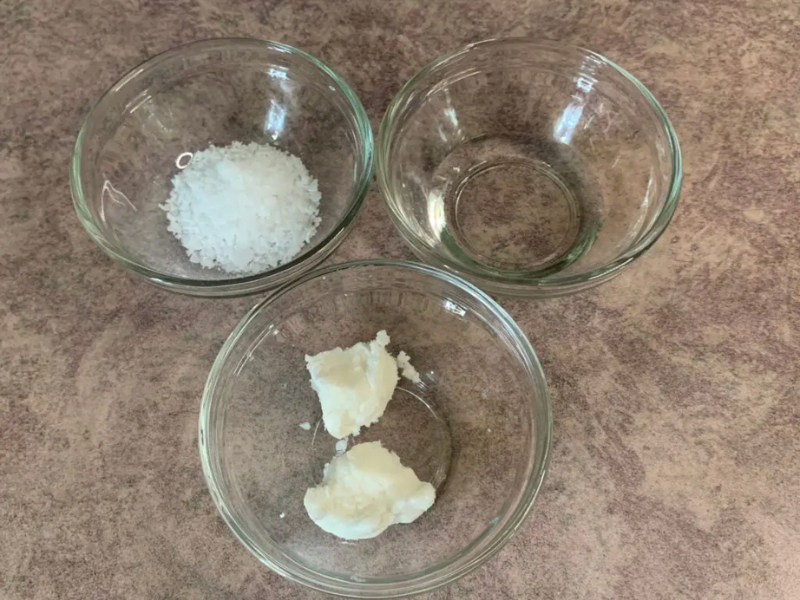
Stearic acid
Stearic acid adds a bit of a silkiness to the whipped soap. It also helps to harden it up so it can stay in a fluffy whipped state. This is also used as a co-emulsifier, which means that it helps to keep the emulsion together better.
Fractionated Coconut Oil
Fractionated coconut oil sounds kind of scary, until you realize that it is just coconut oil that has had it’s fats separated. So basically, different fats in the coconut oil have a different cooling rate, making it quite easy to separate out. I like to use this oil because it is a lightweight oil that does not leave behind a greasy feeling. You can swap this out for a different carrier oil if you prefer.
Shea Butter
Refined shea butter is used to add skin loving oils into our whipped soap. Shea butter is solid at room temperature but it is not brittle. If you were to squeeze it in your hands, it would smush up. This helps to keep the whipped body butter in solid form, but not hard like a bar soap. Shea butter also has a melting point right around skin temperature, so it softens up when on your skin.
Cool Down Phase
Preservative
Super important that we use a preservative in this recipe because it contains water. I am using Optiphen Plus, but feel free to use any broad spectrum preservative that you have. (Just be sure to check the use rates). If you don’t add in the preservative, you will wind up growing some pretty nasty stuff that is not good for you or your whipped soap.
Making whipped soap from scratch
1. Weigh out all your ingredients on a scale.
2. Combine the water phase ingredients in a heat safe container.
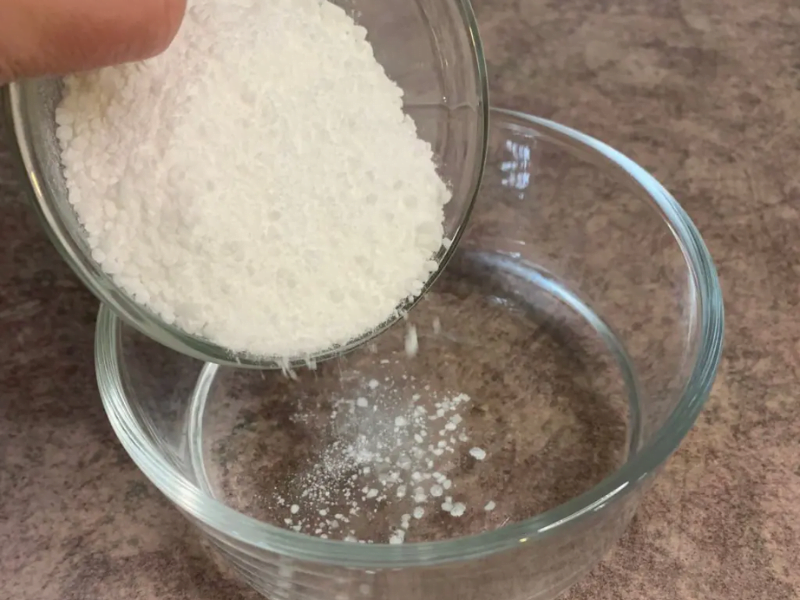
3. Heat the water phase ingredients on a double boiler. For a double boiler, I like to just use a pan with some water and a silicone mat on the bottom of it.
4. Once your water phase has completely mixed together, remove it from the double boiler.
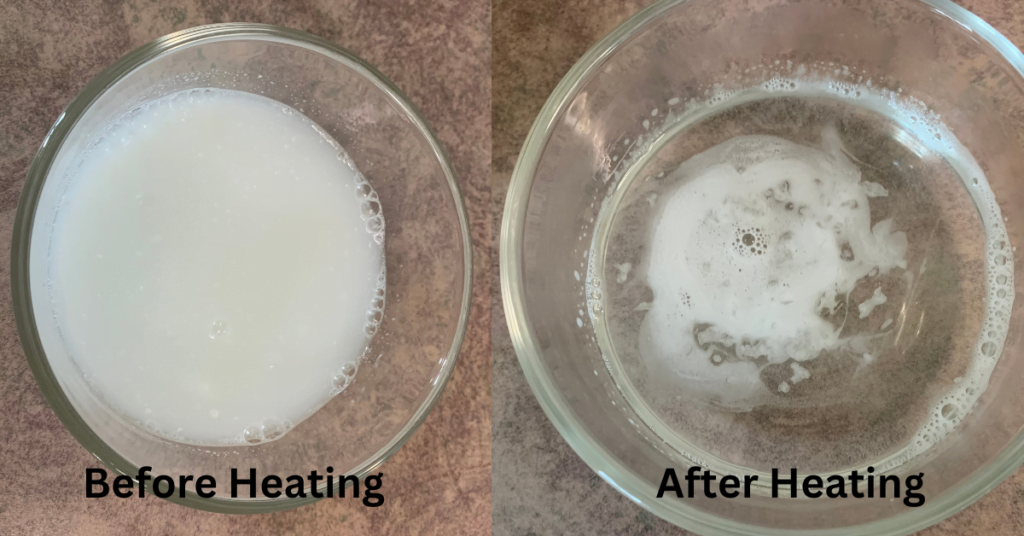
5. Pour the heated water phase into a mixing container. You will want to be sure that it is tall enough for all the bubbling that will happen.
6. Mix just a little bit with your hand mixer. (It is going to bubble up on you, that’s completely normal).
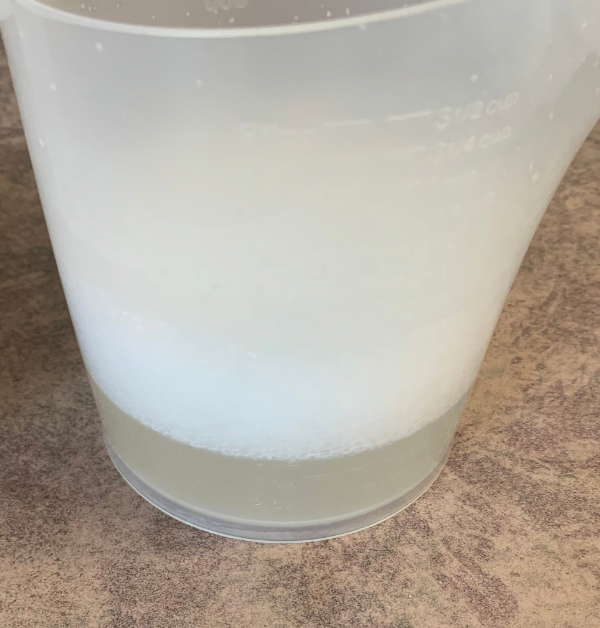
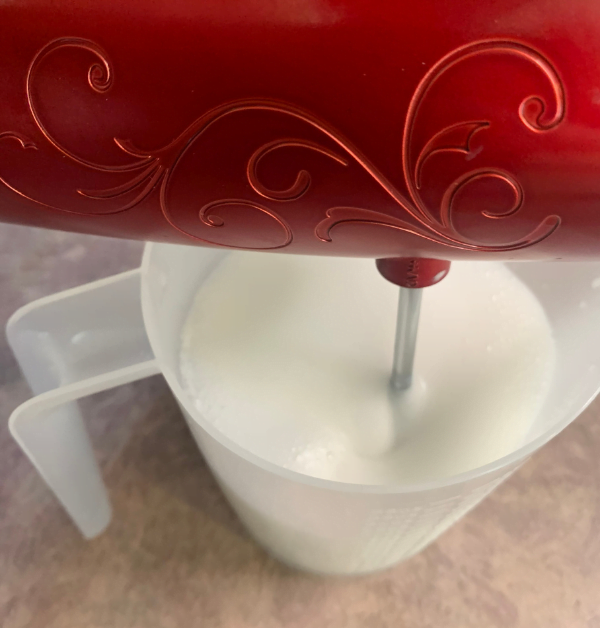
7. Add you oil phase ingredients into a separate heat safe container and put in on the double boiler.
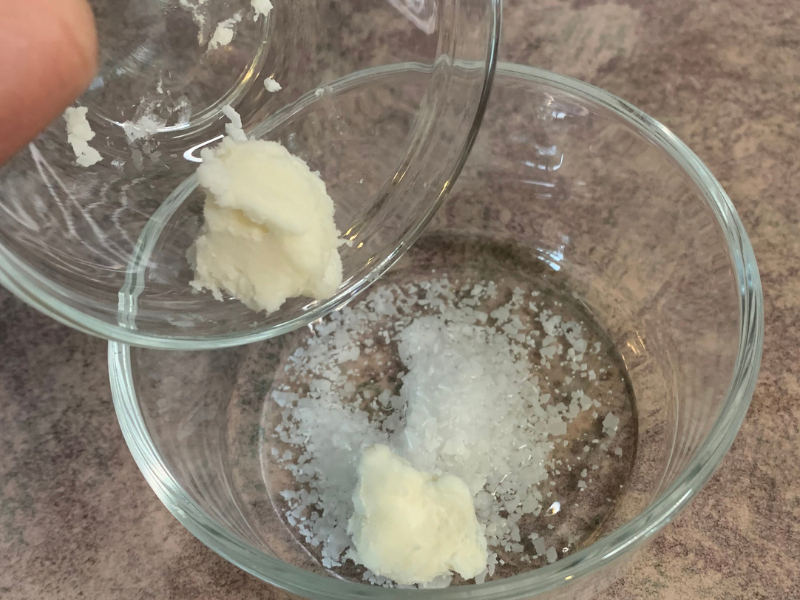
8. Once the oil phase is fully melted, remove it from the double boiler.
9. Add the oil phase into the water phase mixture.
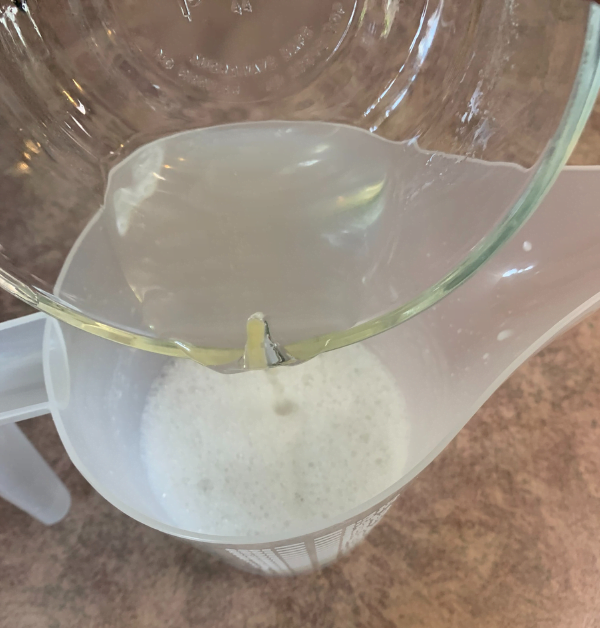
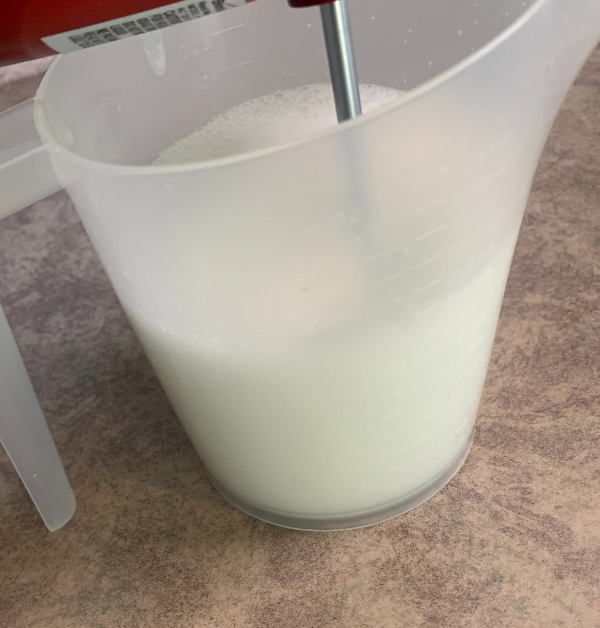
10. Mix well with the hand mixer. The bubble are going to get a little wild on you, but they should not bubble out of the container.
At this point it is still going to be a runny consistency.
11. Verify that the temperature is below 110° F and add your preservative. Mix it in well.
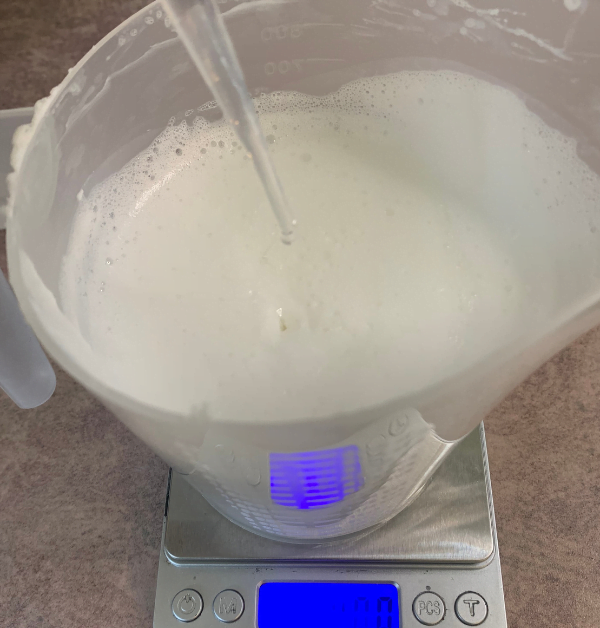
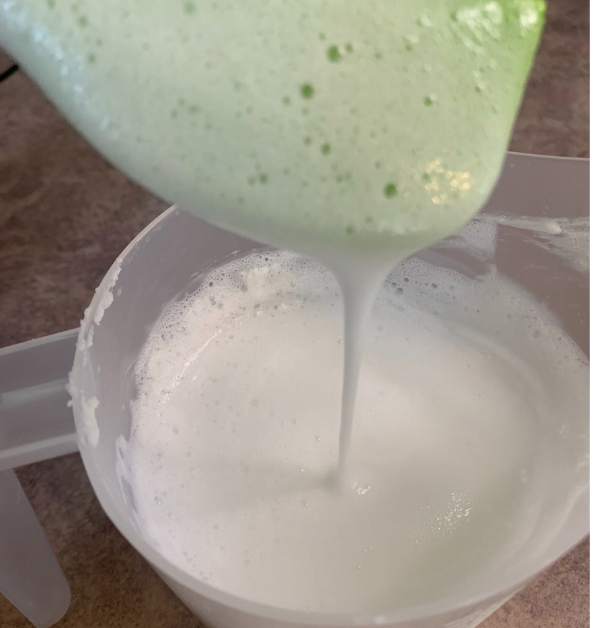
12. Allow to cool, mixing every now and then. You should notice that the soap base is starting to thicken up.
13. When the soap base is fully cooled give it a good whip.
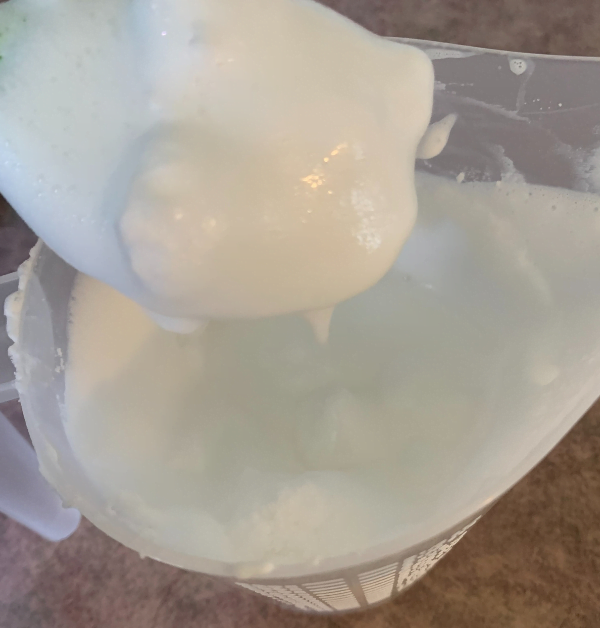
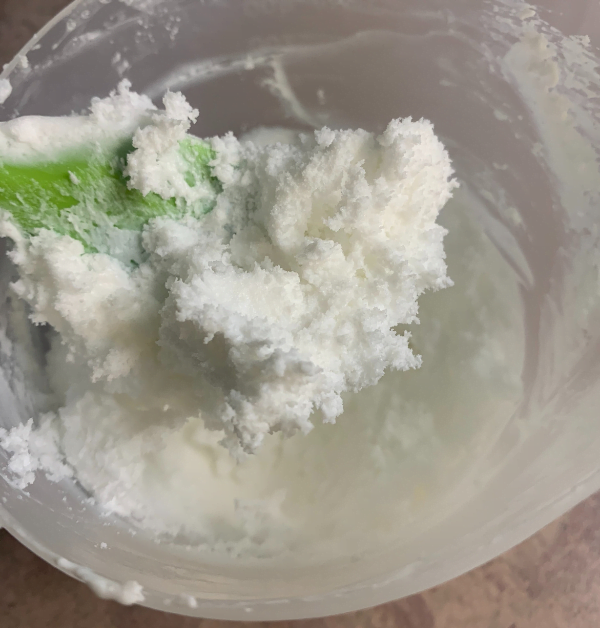

That’s it! Now that your whipped soap base is made from scratch, feel free to whip it into a lovely new creation for now or package it up for later. When you are ready to use it, simply whip it until it comes back to this light fluffy texture.
Whipped Soap Base From Scratch
Equipment
- Double boiler
- Infrared thermometer
- Scale
- Heat Safe Bowls
- Hand Mixer
- Spatula
- Mixing container
Ingredients
Water Phase
- 3.65 ounce | 45.6% Distilled Water
- 0.70 ounce | 8.8% Vegetable Glycerin
- 0.75 ounce | 9.3% Propylene Glycol
- 0.01 ounce | 0.1% Tetrasodium EDTA
- 1.80 ounce | 22.5% SCI
Oil Phase
- 0.22 ounce | 2.7% Stearic Acid
- 0.35 ounce | 4.4% Fractionated Coconut Oil
- 0.44 ounce | 5.5% Shea Butter
Cool Down
- 0.09 ounce | 1.1% Preservative
Instructions
- Weigh out all your ingredients.
- Combine the water phase ingredients in a heat safe container.
- Heat the water phase ingredients on a double boiler. For a double boiler, I like to just use a pan with some water and a silicone mat on the bottom of it.
- Once your water phase has completely mixed together, remove it from the double boiler.
- Pour the heated water phase into a mixing container. You will want to be sure that it is tall enough for all the bubbling that will happen.
- Mix just a little bit with your hand mixer. (It is going to bubble up on you, that's completely normal).
- Add you oil phase ingredients into a separate heat safe container and put in on the double boiler.
- Once the oil phase is fully melted, remove it from the double boiler.
- Add the oil phase into the water phase mixture.
- Mix well with the hand mixer. The bubble are going to get a little wild on you, but they should not bubble out of the container.
- Verify that the temperature is below 110° F and add your preservative. Mix it in well.
- When the soap base is fully cooled give it a good whip.
- That’s it! Now that your whipped soap base is made from scratch, feel free to whip it into a lovely new creation for now or package it up for later. When you are ready to use it, simply whip it until it comes back to this light fluffy texture.
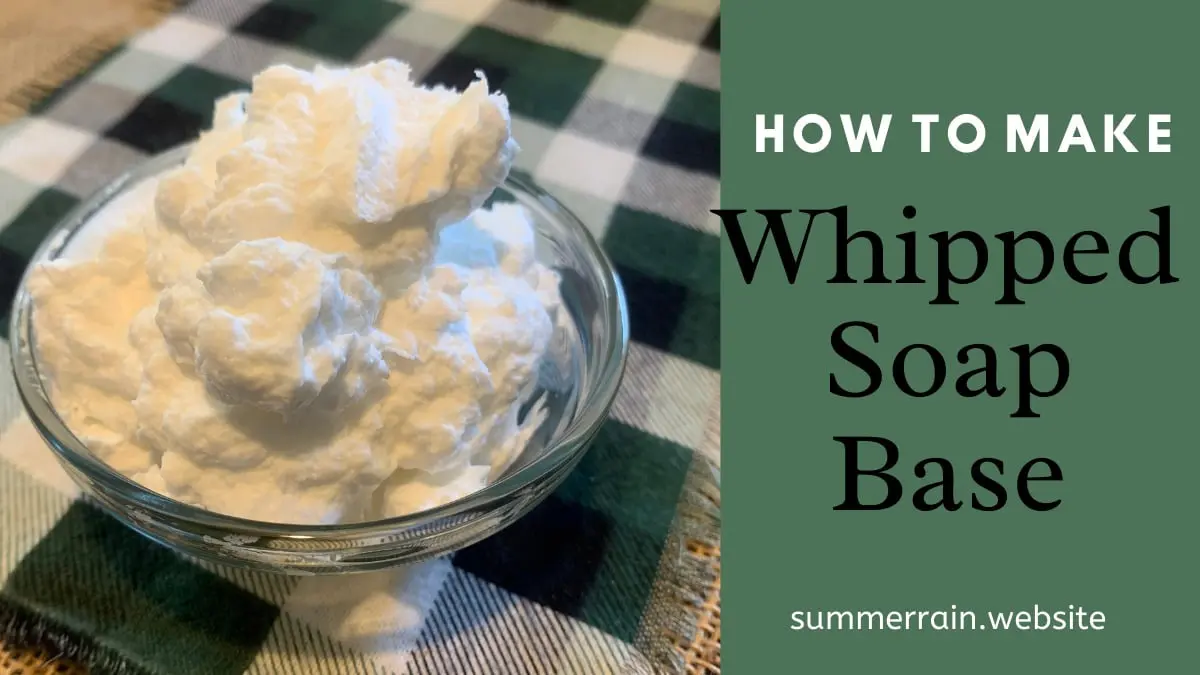
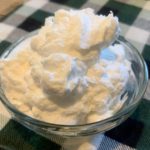
8 thoughts on “Whipped Soap Base From Scratch”
If I wanted to make a bigger batch of this recipe, how would I calculate that Correctly?
Just take the amount you want to make (ie 100 ounces) and multiply by the percentages. That will tell you how much of each ingredient is needed. So for the SCI it would be 100*22.5% = 22.5 ounces.
Hi there,
Do you perhaps have a alternative for the Tetrasodium EDTA?
Also you don’t perhaps have this recipe in a grams format? We work on a different metric system here is South Africa and I am afraid to convert myself and maybe mess with your formula.
Warm regards,
Armand
I do not have a good alternative for the terasodium EDTA, you could try to exclude it and see if that works.
If you wanted to use grams, just use the percentages and multiply. For example, if you are making 100 grams, 100*22.5%= 22.5 grams of SCI. (Hope that helps).
I found your recipe today on Youtube. Love how you teach it. i have a question. Your percentages do not total 100%. Which of these should be increased as it is lacking 9% of something? Can you help me please ??
Oh jeez, sorry about that. I have updated it!
Thank you for the nice and lovely recipe 😊 your percentages do not total 100%. it is still lacking 4% of something 😅!! can you help please!! 😘
I have updated the recipe, thanks
Comments are closed.